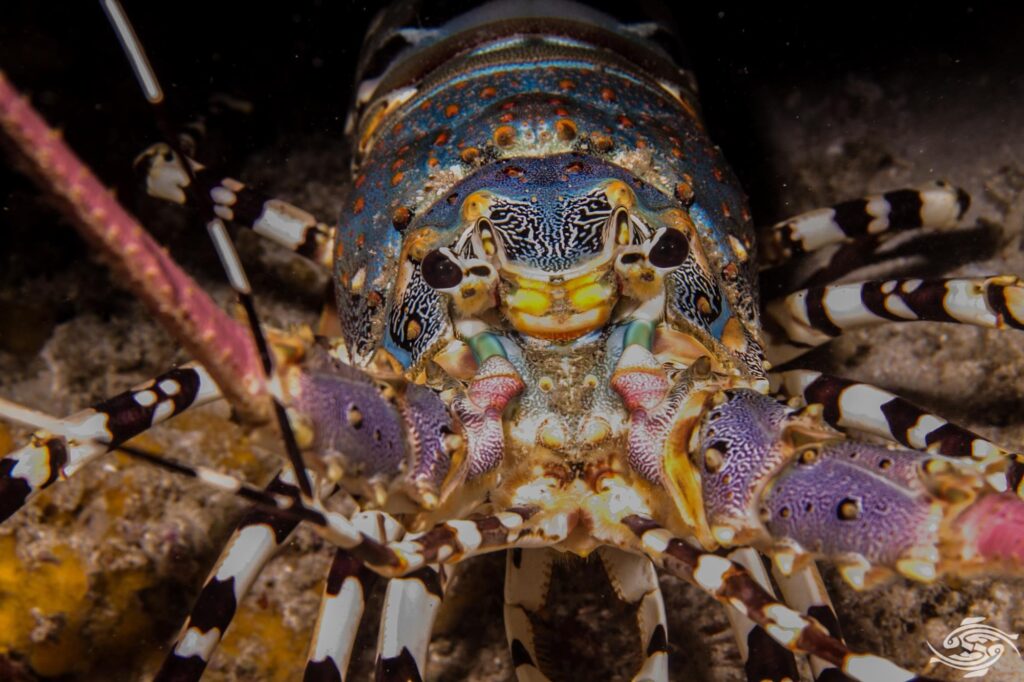
In the azure waters of the Pacific, a captivating creature roams, known to marine enthusiasts as the Tropical Rock Lobster or Panulirus ornatus. This magnificent spiny lobster, adorned with a kaleidoscope of colors reminiscent of a rainbow, holds within its lifecycle a mesmerizing tale of migration and survival.
The journey of the Tropical Rock Lobster begins with a remarkable metamorphosis, transitioning through a staggering 11 larval stages. As if mastering the art of transformation, these tiny larvae eventually grow into juveniles, ready to embark on a voyage that spans hundreds of kilometers. Annually, this fascinating species undertakes an arduous migration from the Torres Strait to Yule Island in the Gulf of Papua, all with a singular purpose – to breed and ensure the continuation of its kind.

Yet, what makes this migration truly captivating is how it unfolds with a delicate choreography of nature. Upon reaching the breeding grounds, a curious phenomenon transpires – the sexes segregate based on water depth. Male Tropical Rock Lobsters venture into shallower waters, while their female counterparts venture deeper. It is as if they instinctively know the secret to successful breeding lies in this orchestrated separation.
The females, having found their preferred depths, delicately lay their eggs, and with tender care, await the hatching of their offspring. Interestingly, female Panulirus ornatus possess a unique capability to produce multiple broods. However, with each successive brood, there is a noticeable reduction in the size of the offspring. Nature’s way of ensuring the best chances for the survival of the species, perhaps.

Unlike some other migratory creatures, there is no return migration of the breeding adults. The Tropical Rock Lobster engages in a reproductive migration across the vast Gulf of Papua, all in the pursuit of disseminating its offspring efficiently. By entrusting the larvae to oceanic currents, these tiny creatures ride the waves, favoring their distribution near the Torres Strait, where the cycle of life begins anew.
Through this intricate dispersion mechanism, Panulirus ornatus larvae find themselves scattered along the eastern coast of Australia. However, their journey is far from over. As juveniles, they must navigate their way back to the adult habitat, which lies in the northern reaches of the Torres Strait. With resilience and determination, they make this journey, establishing themselves in specific reef complexes, where they will remain for one to two years until reaching breeding age.

Once maturity graces these colorful creatures, they undertake the grand annual mass migration, repeating the cycle that has persisted for generations. It is a spectacle of nature’s brilliance, a testament to the harmonious rhythm of life and the innate wisdom embedded within these marvelous creatures.
The Tropical Rock Lobster, with its rainbow hues and intricate migration, serves as a symbol of the interconnectedness of marine ecosystems. It reminds us of the delicate balance that sustains life beneath the waves and the importance of preserving these habitats for future generations.

Next time you catch a glimpse of a rainbow lobster, take a moment to marvel at the secrets it carries within its being. From its 11 larval stages to its long-distance migration, this wondrous creature offers a window into the captivating world of marine biology and reminds us of the beauty and resilience that thrive within our oceans.

Leave a Reply